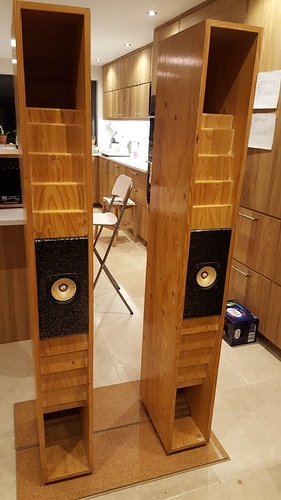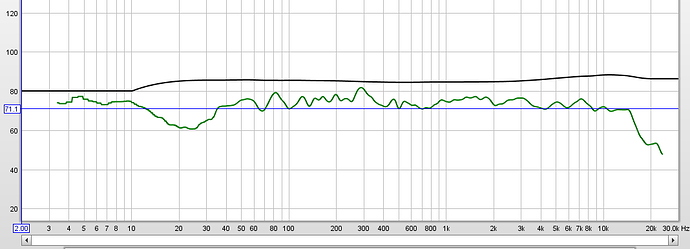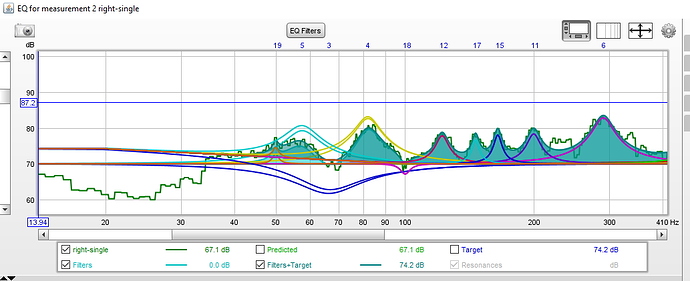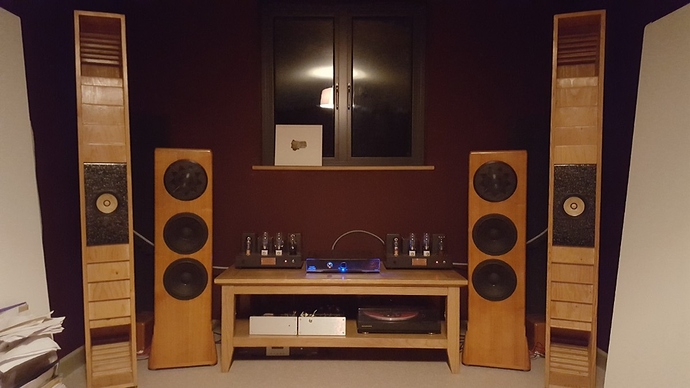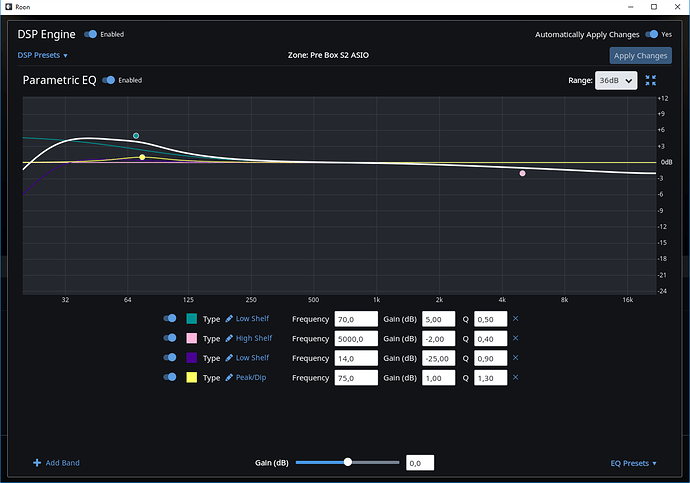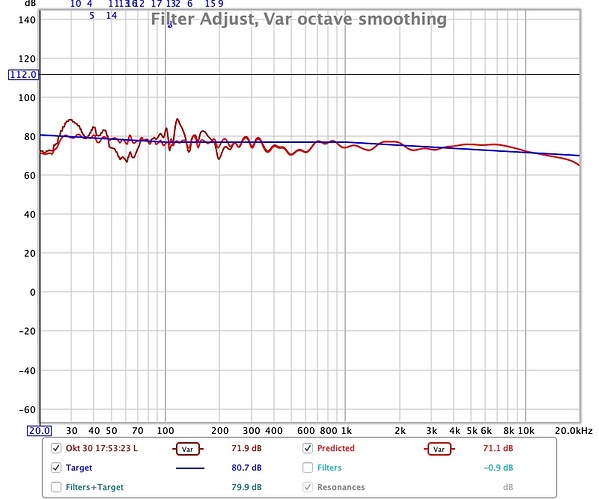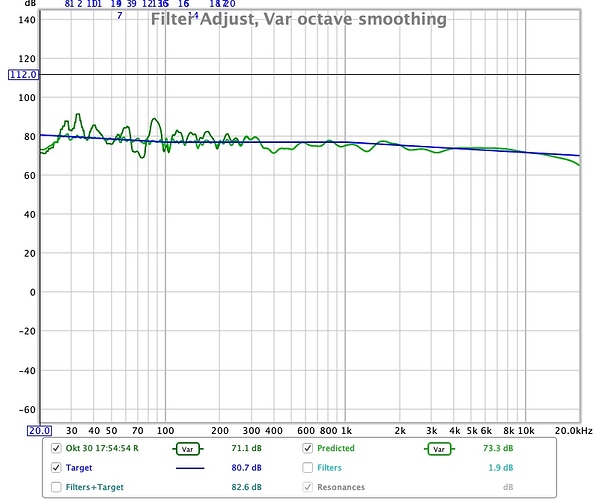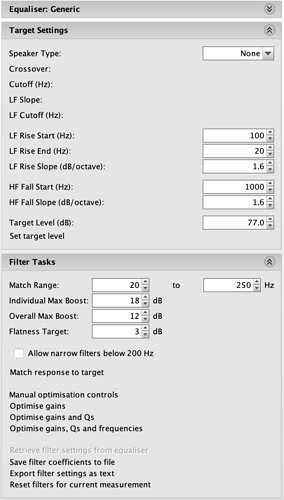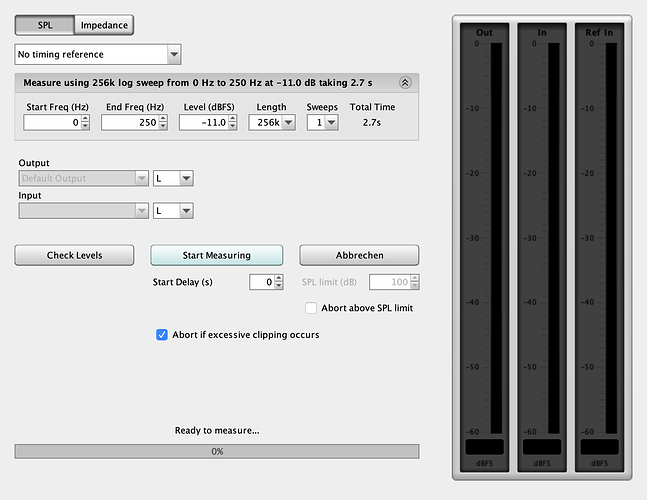I can’t. I use SonicTransporter and a UltraRendu.
You can save the “Pink PN” sound from the generator in REW, copy the wav file to your music library and play it from Roon. Just remember to disable all DSP before using it. Use the disk icon with “WAV” to do that.
Still at the same lever as stated in 4 ?
Yes, once the volume level is set it should not be changed. I try to keep my measurements at around 75 dB since I don’t listen to music very loud (apartments with neighbors). But 80 or even 90 is ok but then you should probably use some ear protections.
To get Roon to play from one speaker only, add Procedural EQ and in that add Mute channels and mute the channels you are not measuring.
Would not using balance function on my pre have the same effect, or even pull out one speaker or signal cable ?
Not sure, but I would prefer to use it on the input signal (i.e. in Roon). Probaly wont matter though, just feels more clean that way.
Thank you for this Magnus 
I had been playing around with using REW and a Minidsp for room correction recently and the results were quite nice, but I wasn’t happy to add extra devices into my audio chain converting analog to digital and back again, so I was very pleased indeed to find I can do this in Roon and keep things pure. It was so easy to do once I had the microphone.
So easy infact that I also used it to try with some different speakers. Some big, ugly, 6 foot tall folded horns with a single full range driver which I bought as an experiment some years ago.
I was always totally captivated with the holographic imaging from these speakers, it was like nothing I ever heard before, but… the rest of the sound was thin and harsh and fatiguing, so it was a nice party trick, but never a serious contender.
But now, with this convolution DSP in Roon I have been able to measure the sound profile of these speakers in the room and compensate for the weird peaks.
You can see some 10db peaks in the measurements
and the filters that got created
So it took me around 10 minutes to measure and put the DSP filter in and WOW!! Now I have the amazing stereo image and spooky detail, but also with deep bass and a rich and pleasing sound I could listen to for hours. It’s the best my system has ever sounded for sure.
What an amazing transformation 
James
Interesting speakers, and nice to hear you like the result of the guide. You can now experiment a little more by adding a house curve to Roon if you like, this is the one I use:
Modify it to your liking, this is based on the famous B&K house curve.
This thread is amazing. I’m willing to give it a try once I get in my new place and upgrade my amp and DAC. I’ll be running a big class A monster, the Gryphon Colosseum, with an Aqua Formula xHD R2R DAC.
I don’t play loud, I just like the sound of Class A amplifiers.
I run Roon on a MacMini and will be running it over USB to the Formula.
I have some funny speakers, an older pair of Gryphon Cantatas which have a Q controller box to roll off bass in small rooms.
I’m not sure how all of this will play with REW or DIRAC. Thoughts?
If I spend the money on DIRAC for the MacMini, do I get room direction on all musical output, seamlessly, and not have to turn on the DSP in Roon? I’m leaning towards getting a subscription to Naxos Music Library and they’re not integrated with Roon so that’s why I ask.
I would suggest to try from this thread first, you need a microphone anyway and everything else in this guide is free. Then I would suggest using Thierry if you want to improve (see Roon & Home Audio Fidelity (Room Correction / convolution filter creation) ). You would then also use REW and USB microphone but instead of letting REW do the correction you let Thierry do them (he has very fancy software which fixes phase problems and crosstalk).
Having said that, give Dirac a try as well, they have a free 3 week trial. I also think they will release a new version soon, if they haven’t already.
Magnus, thank you for the excellent guide on how to do an automatic EQ curve through REW and applying it within Roon. Previously I had used a much more rudimentary method where I would put the microphone at the listening spot without moving the microphone, and then I created my own EQ filters. Very tedious in comparison to pressing a button and having the filters automatically generated. I have just applied the new filters within Roon and the sound is a marked improvement over my own filters.
I might still go down the route of using DIRAC, but for zero extra cost (as I already have the UMIK-1), this might be just enough for me.
Edit: I did some more tinkering with this as it opened up a few new doors for me with using REW and EQing. I decided to adjust some of the settings in the EQ window - namely, I took off the HF roll-off filter and also I manually adjusted the target level so that it created a more flat response overall. REW wanted to put the target level at a spot that was about 5dB higher than the treble frequencies and while it sounded great, it sounds even better with everything at around the same level.
And, while I was a purist before in terms of having no adjustment to bass (i.e., after flattening out the bass frequencies, not boosting anything), I must admit I really like having the house curve. I just used REW’s default 1.8dB/slope LF curve and I quite like it. Previously when I adjusted up to 500Hz I found everything thinned out too much - it seemed like it cleaned up some important areas but ended up sounding thin overall. Adding the house curve solved that problem and now I have better clarity without any thin sound.
Let me say that your guide is a quite useful one, nice job.
Also you are right in saying that Dirac does not average the measurements for filters creation, it only averages them when presenting the results.
The algorithm instead uses those nine measurements for identifing what can be corrected, and what not, depending on how measurements change with position in a frequency dependent manner.
 Flavio
Flavio
I am using Roon Devialet Air integration. I also own a Dirac licence but haven’t yet used it. Am I right to think that there is no way to use the Dirac room correction in this context?
Thank you.
I hope I’m in the right place and you can help me with my problem. Or maybe you @Magnus, since you know the subject very well.
First I describe my goal, so that my problem is better understood. I want to use the Roon DSP machine (convolution filter) to eliminate my room modes in the best possible way. My room is otherwise already sufficiently damped with passive measures and doesn’t need any correction for the mids and highs, or I deliberately don’t want to interfere too strongly with the music signature of my equipment.
According to the instructions at the top of the thread (and other instructions I found in the net or here in the community) I have done several experiments with the measurement - each loudspeaker individually (L + R) and also together, since this should theoretically suffice for the lower frequencies. I have carried out tests of e.g. 15 - 150 Hz or 20 - 250 Hz or 40 - 200 Hz (to intervene only from the fall of the curve). My room has an L-shape and therefore produces different room modes left and right (to the left the room is twice as long to the back as to the right). That’s why I measured both speakers separately. The measurement is done with REW V5.19 and the UMIK USB microphone (on a microphone stand), at a level of about 77dB, with normal pink noise. I use the RTA for the measurement, apply the filters as described (see screenshots).
The result was very disappointing in any case. This means that the bass is totally distorted when the convolution filter is switched on - especially with electronic low bass (e.g. Living Fields, first song). I still have to
What am I doing wrong, or can someone help me who has already had this experience and knows a solution?
Thanks in advance
Individual and overal maximum boost in filter task is too high… +9 idB is the maximum in my opinion.
Agreed. Try:
- Individual max boost 6dB
- Overall max boost 7dB
- Flatness target 2 or 3 dB
- very important : tick “allow narrow filters below 200Hz”
It is difficult to optimise in details without knowing the temporal/decay behaviour of the system. For this you need to run a sweep analysis on Left channel / reference Left and Right channel / reference Left (no need to to both). If you post a link to the corresponding .mdat file we can further help you 
Try to do it manually in REW instead of using auto-correction. A few filters in each channel, from 20 to 150Hz, should be enough. Then experiment and see if its best to correct each channel, or do a mono-correction.
You can also experiment with sweep measurements: 3-4 at or close to “left ear”, same on other side, average each side and manually correct. Sweeps can be done according to this picture:
Yet more advice. Your head will be spinning.
You expressed a desire to not overly affect your speakers’ signature sound and with room treatment already applied you simply want to finesse the low frequency range.
All of the previous posts are all relevant to that ideal but, personally, I would attempt to achieve those suggestions using the ERB smoothing option rather than the VAR smoothing option. Either by manual input or REW automatic the generated filters should be few and broader/smoother in shape.
Btw - any future REW frequency graphs would be better viewed with a much smaller y axis (dB). In your case, something close to 65dB-90dB.
@Cantodea @alec_eiffel @Magnus @Alandbush Many thanks for all your hints and tips. I will try to use them accordingly and experiment a bit further.
One more question about the sweep measurement and therefore a screenshot of the default settings of REW added. Should I leave them as they are or what do I have to pay attention to?
I have corresponding sweep files, but I have to send them directly from the music server to the streamer/DAC because I don’t have a USB input and everything is connected via Ethernet. The UMIK is then connected directly to my MacBook.
If I can’t get any further with it, I will contact you again with the corresponding measurements of the sweep analysis.
Thanks again in advance
Looks good! I run it with twice the length (which should be a little more accurate), but other than that I use default. If you play the sweep from somewhere else than REW you have to use a timing reference though (its a short beep so REW know when to start measure).
I think you can generate and save the sweep from within REW tone generator, with timing reference.
